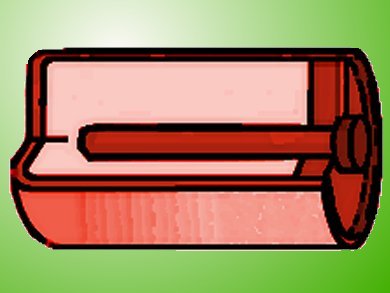Gurpreet Singh, Kansas State University, USA, and colleagues created graphene films that are between two and 10 layers thick. They were grown in less than 30 min on copper and nickel foils by quickly heating (approx. 8 °C/s) them in a modified atmospheric pressure chemical vapor deposition furnace in the presence of controlled amounts of argon, hydrogen and methane gases.
These graphene films were used as anodes of a lithium-ion cell. The charge and discharge characteristics of this rechargeable battery was studies. The graphene films grown on copper did not cycle the lithium ions and the battery capacity was negligible. Graphene grown on nickel showed improved performance because it was able to store and release lithium ions more efficiently. This behavior is belived to occur because sheets of graphene on nickel are relatively thick near the grain boundaries and stacked in a well-defined manner which provides multiple sites for easy uptake and release of lithium ions as the battery is discharged and charged.
In a more recent research project, the researchers created tungsten disulfide nanosheets that were approximately 10 layers thick. Starting with bulk tungsten disulfide powder it was possible to separate atomic layer thick sheets of tungsten disulfide in a strong acid solution. This simple method made it possible to produce sheets in large quantities.
It was found that in these sheets lithium is stored through a conversion reaction in which tungsten disulfide dissociates to form tungsten and lithium sulfide as the cell is discharged. Unlike graphene, this reaction involves the transfer of at least two electrons per tungsten atom. Researchers have long disregarded such compounds as battery anodes because of the difficulty associated with adding lithium to these materials.
Future research focusses around how these layered nanomaterials can create better electrodes in the form of heterostructures, which are essentially three-dimensional stacked structures involving alternating layers of graphene and tungsten or molybdenum disulfide.
- Synthesis of graphene films by rapid heating and quenching at ambient pressures and their electrochemical characterization,
L. David, R. Bhandavat, G. Kulkarni, S. Pahwa, Zhong Z, G. Singh,
ACS Appl. Mater. Interfaces 2012.
DOI: 10.1021/am301782h - Synthesis of surface-functionalized WS2 nanosheets and performance as Li-ion battery anodes,
R. Bhandavat, L. David, G. Singh,
J. Phys. Chem. Lett. 2012, 3 (11), 1523–1530.
DOI: 10.1021/jz300480w


